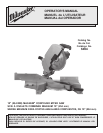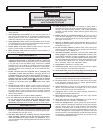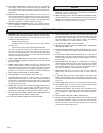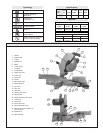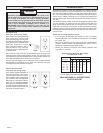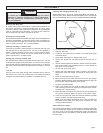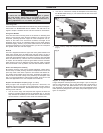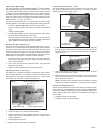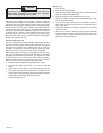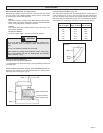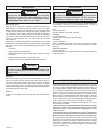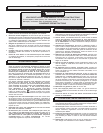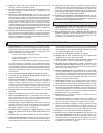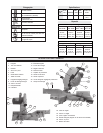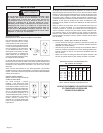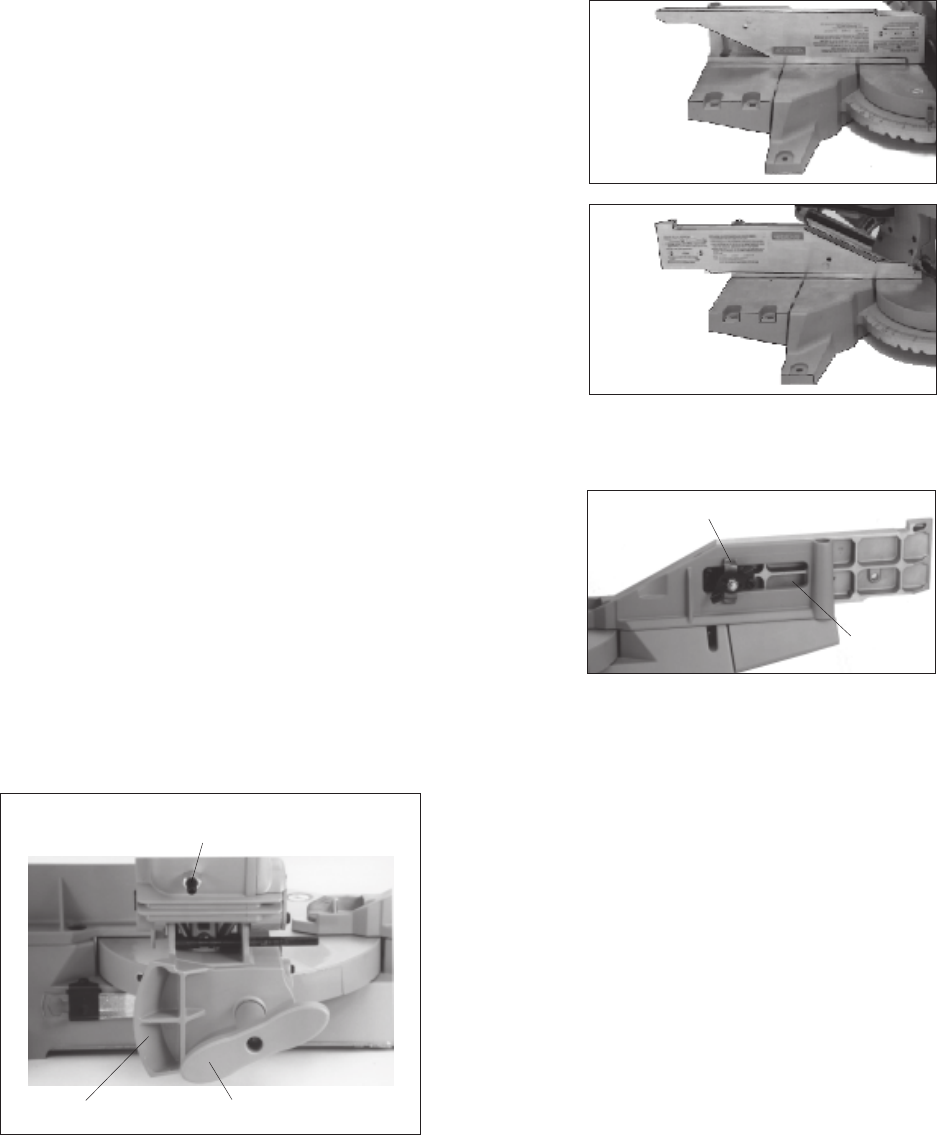
page 9
Adjusting the Miter Angle
The miter mechanism on the MILWAUKEE Magnum
®
Compound Miter
Saw has detent settings for commonly cut angles (0°, 15°, 22.5° 30°, and
45°). These detents make for quick, accurate set up of common angles.
In addition to the spring-loaded detents there is also a detent override.
The detent override, when engaged, allows the turntable to smoothly
rotate to any miter angle. The turntable can be easily locked at any miter
angle. The detent override is especially useful when making small ad-
justments near 0°, 15°, 22.5° 30°, and 45°.
The saw cuts miter angles from 51° on the left to 59° on the right. Angle
markings appear on the scale that runs along the perimeter of the base.
1. To select a positive angle stop, loosen the clamp handle.
Press the angle stop lever and rotate the turntable to the desired
angle.
Tighten the clamp handle.
2. To select other angles, use the override mechanism, which allows
quick and accurate adjustments at any angle.
Press the angle stop lever down and in with your thumb until the
lever engages with the lock lever. Rotate the turntable to the desired
angle. Tighten the clamp handle securely clockwise.
Adjusting the Bevel Angle (Fig. 5)
The bevel mechanism has two positive sping-loaded stops: one at 0°
and one at 45°. The mechanism can be adjusted to any angle in between
by using the bevel angle scale. The bevel mechanism also has several
degrees of overtravel on both the left and right; the saw can be adjusted
to 48° on the left and to negative 3° on the right. To obtain the overtravel,
apply several pounds of force on the saw handle to override the spring-
loaded stops. Do not attempt to exceed the stated overtravel.
1. To adjust the bevel angle, place one hand on the front handle for
better control. Using the other hand, loosen the bevel adjustment
lever counterclockwise.
2. Pull or push the saw handle to desired position, using the bevel
angle scale as a guide.
3. Tighten the bevel adjustment lever clockwise securely.
Adjusting the Depth of Cut (Fig. 5)
The depth of cut is adjusted at the factory. Sometimes it may be neces-
sary to readjust the depth. For example, as blades wear down and are
resharpened, you may wish to increase the depth of cut. When buying
a new blade, you may need to reduce the depth of cut.
1. Unplug the tool.
2. Loosen the lock nut by turning counterclockwise.
3. Slightly raise the saw head to reduce the depth of cut or slightly
lower the saw head to increase the depth of cut. Make only a
SLIGHT adjustment.
4. Securely tighten the lock nut.
5. Make a sample cut and adjust as necessary.
Using the Flip Fence (Figs. 6, 7, & 8)
The quick-change flip fence can be positioned for simple miter cuts
(Fig. 6) and for bevel and compound cuts (Fig. 7). This helps to provide
superior support for both types of cuts.
Fig. 6
Fig. 7
1. To adjust the fence, loosen the fence lock lever (counterclockwise)
(Fig. 8). When the fence lock lever is parallel with the fence slot, pull
the fence away from the saw. A firm detent must be overridden to
accomplish this.
2. Position the fence for the desired cut. Always position the fence
properly for maximum work support.
3. With the fence lock lever parallel to the fence, insert the fence lock
lever through the fence slot. Turn the fence lock lever clockwise to
secure the fence to the tool.
NOTE: The clamp on the mechanism must be rotated to a vertical
position, 90° to the slot. This position is required for proper clamping.
Starting and Stopping the Tool
Always hold the handle firmly because the starting and stopping action
of the motor may cause the handle to move up or down slightly. Always
secure the turntable by tightening the clamp handle when setting miter
angles. Always make sure the spindle lock is released so the blade is
free to rotate.
1. To start the motor, pull the trigger.
2. To stop the motor, release the trigger.
Fig. 8
Fence lock lever
For miter cuts
For bevel and
compound cuts
Fence slot
Fig. 5
Depth adjustment screw
with lock nut
Bevel adjustment leverBevel angle scale



